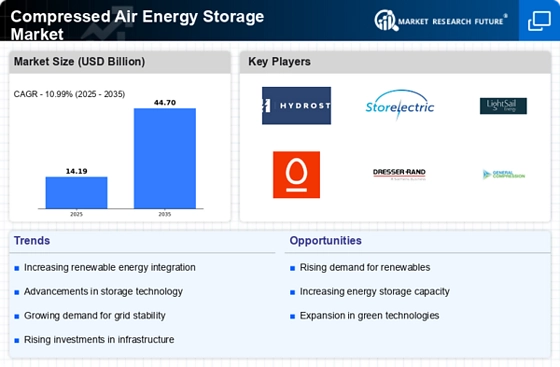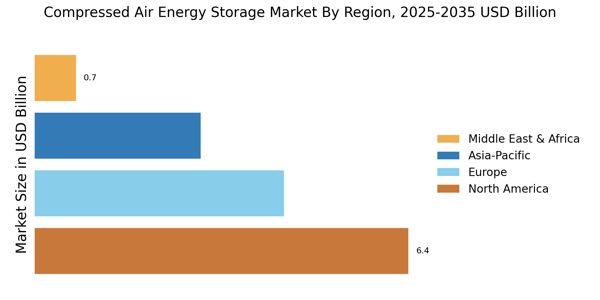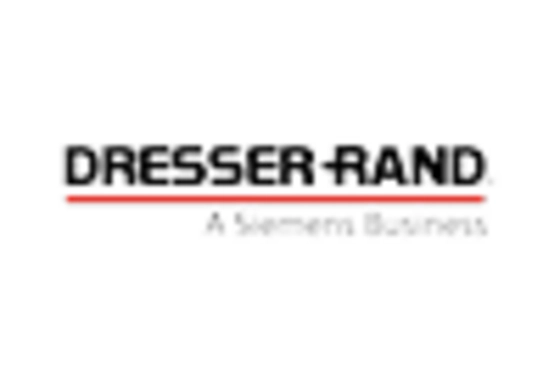Advancements in CAES Technology
Advancements in technology are propelling the Compressed Air Energy Storage Market forward. Innovations in materials, system design, and operational efficiency are enhancing the performance of CAES systems. For instance, the development of advanced compressors and expanders has improved energy conversion efficiency, making CAES a more attractive option for energy storage. Furthermore, research indicates that the efficiency of CAES systems can reach up to 70%, which is competitive with other energy storage technologies. These technological improvements are likely to attract investments and drive market growth, as stakeholders seek to capitalize on the benefits of enhanced CAES systems.
Environmental Sustainability Initiatives
Environmental sustainability initiatives are increasingly influencing the Compressed Air Energy Storage Market. As nations strive to reduce carbon emissions and transition to cleaner energy sources, CAES systems emerge as a favorable option. They can integrate seamlessly with renewable energy sources, such as wind and solar, to store energy generated during optimal conditions. This capability not only enhances the reliability of renewable energy but also contributes to a reduction in greenhouse gas emissions. The market for energy storage solutions, including CAES, is expected to grow significantly, driven by the global push for sustainability and the need for cleaner energy alternatives.
Growing Demand for Energy Storage Solutions
The increasing demand for energy storage solutions is a primary driver for the Compressed Air Energy Storage Market. As energy consumption rises, particularly during peak hours, the need for efficient storage systems becomes more pronounced. Compressed air energy storage (CAES) offers a viable solution by storing excess energy generated during low-demand periods and releasing it during high-demand times. According to recent estimates, the energy storage market is projected to reach a value of approximately 200 billion USD by 2026, indicating a robust growth trajectory. This trend suggests that CAES systems, with their ability to provide large-scale energy storage, are likely to play a crucial role in meeting future energy demands.
Regulatory Frameworks Supporting Energy Storage
Regulatory frameworks supporting energy storage are shaping the landscape of the Compressed Air Energy Storage Market. Governments are increasingly recognizing the role of energy storage in enhancing grid stability and reliability. Policies and incentives aimed at promoting energy storage technologies, including CAES, are being implemented across various regions. For example, some jurisdictions offer tax credits and grants for energy storage projects, which can significantly reduce the financial burden on developers. This supportive regulatory environment is likely to encourage the adoption of CAES systems, facilitating their integration into the energy mix and contributing to market growth.
Increasing Investment in Renewable Energy Projects
The surge in investment in renewable energy projects is a significant driver for the Compressed Air Energy Storage Market. As countries commit to ambitious renewable energy targets, the need for effective energy storage solutions becomes critical. CAES systems can provide the necessary support to balance supply and demand, particularly in regions with high penetration of intermittent renewable sources. Reports suggest that investments in renewable energy are expected to exceed 1 trillion USD annually by 2030, creating a favorable environment for CAES technologies. This trend indicates a growing recognition of the importance of energy storage in achieving energy transition goals.


















Leave a Comment